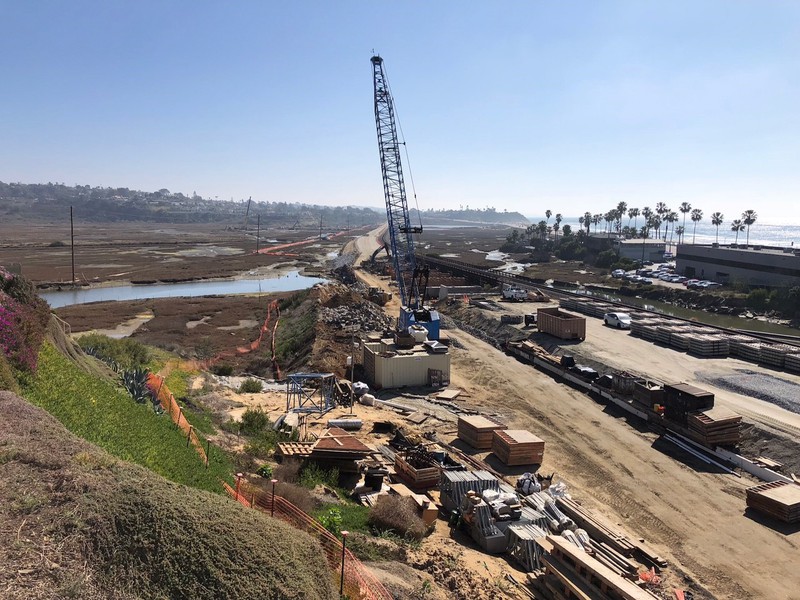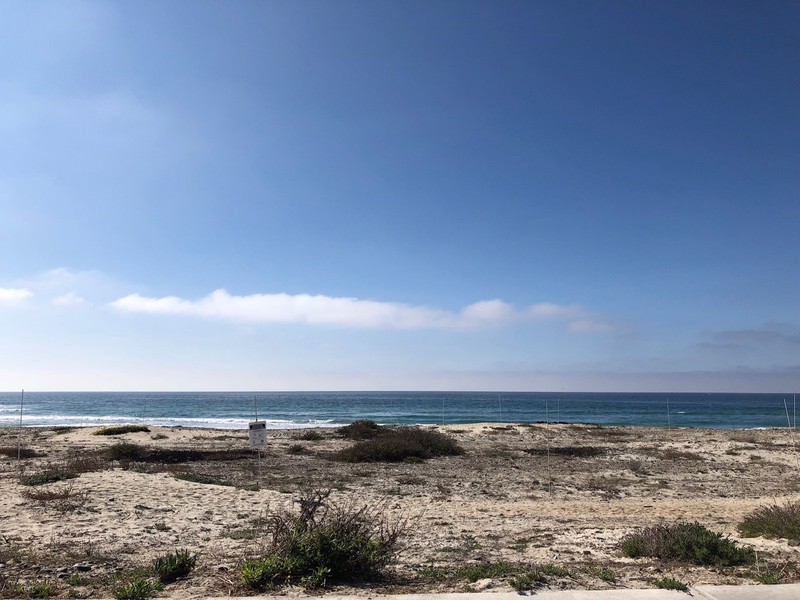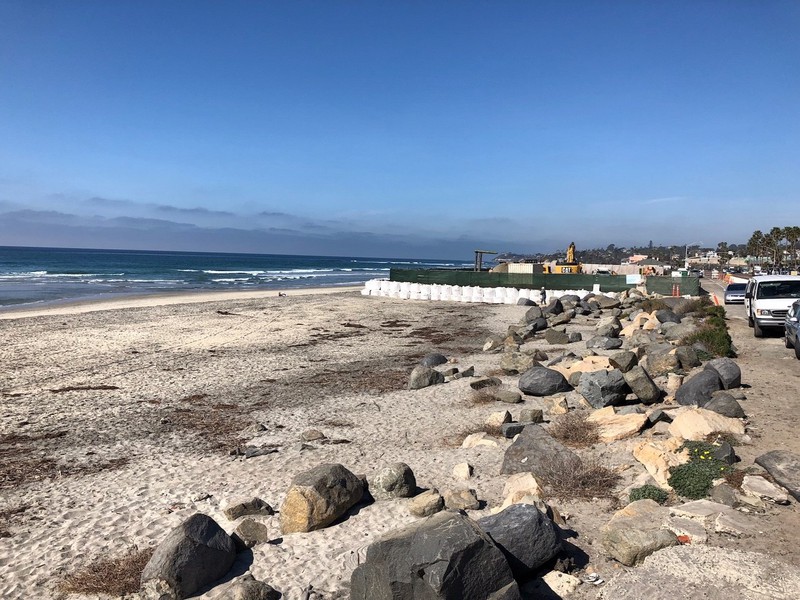Beach replenishment and lagoon restoration
This restoration project is a component of an infrastructure project to upgrade a road and rail crossing of the San Elijo Lagoon (an Ecological Reserve) in southern California. One area includes sediments contaminated by historical sewage ponds which are an ongoing source of excess nutrients to the estuary. Project designers recognized that hauling sediments offsite would be a cost burden, and realized that other areas contained deep layers of sandy material. By using clean sand beneficially at adjacent beaches, a containment pit for contaminated sediments is created, coastal protection is improved, and several restoration objectives are being achieved at a low cost.
The restoration area included a significant sediment management challenge: one area of the lagoon was historically used as a sewage pond, and contaminants remained in a significant volume of sediments. The elevated sediment nutrients are at levels that constitute an ongoing contamination source to the system, contribute to water quality pollution, and promote eutrophic conditions.
Other areas of the lagoon contained clean sandy deposits, and an adjacent beach was well known to be in need of sand replenishment. Project planners recognized that by placing clean sands on the beach, a containment area for contaminated sediments could be created, capped with reserved clean sediment, and restored as part of the larger project. The clean sands could then be managed in a beneficial manner, and achieve several ecological reserve management objectives.
Benefits of the project include:
- Beach sand replenishment - prevention of storm damage and recreational opportunities
- A portion of the sand was placed above the high tide line to provide ecological habitat in the form of low dune systems and create additional storm resiliency
- The restoration of the lagoon could be completed so that contaminated sediments were sequestered and that restoration could take place on clean sediments
The sequestered sediments were contained on site rather than exported, resulting in significant cost savings for the project.
Graphical information:



References/web links
- Restoration Project Documents:
https://www.sanelijo.org/revivingwetlands - Restoration progress blog
https://sanelijoconservancy.blog - Information on the infrastructure project scope:
http://www.keepsandiegomoving.com/BuildNCC/buildNCC_introduction.aspx